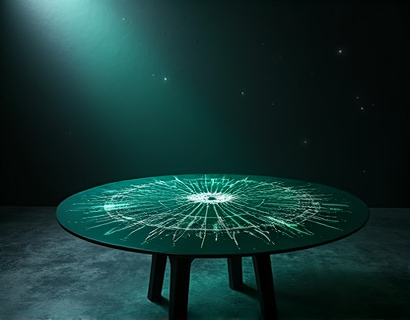Unveiling the Mysteries of the Indus Valley Civilization: A Journey Through Ancient Secrets and Heritage
The Indus Valley Civilization, one of the oldest and most advanced civilizations in human history, flourished around 2600 BCE to 1900 BCE in the regions now known as Pakistan and northwestern India. This ancient culture, known for its sophisticated urban planning, advanced irrigation systems, and unique script, has long captivated the imagination of historians, archaeologists, and enthusiasts alike. This article delves into the rich tapestry of the Indus Valley Civilization, exploring its secrets and celebrating its heritage through art and exclusive merchandise, offering a profound insight for history enthusiasts and cultural scholars.
The civilization's name originates from the Indus River, which played a crucial role in the development and sustenance of this ancient society. The Indus Valley Civilization is often referred to as the Harappan Civilization, named after the city of Harappa, one of the first sites discovered and excavated in the early 20th century. The civilization is divided into three phases: the Early Harappan (3300-2600 BCE), the Mature Harappan (2600-1900 BCE), and the Late Harappan (1900-1300 BCE). Each phase brings to light different aspects of this enigmatic culture, from its early settlements to its eventual decline.
One of the most remarkable features of the Indus Valley Civilization is its urban planning. Cities like Harappa and Mohenjo-Daro (referred here as "the city") were built with a level of sophistication that was unmatched in the ancient world. The cities were laid out in a grid pattern, with streets running north-south and east-west, creating a well-organized and efficient urban structure. The advanced drainage and sewage systems, including covered drains and public baths, demonstrate the civilization's commitment to hygiene and public health. The Great Bath in Mohenjo-Daro, a large public bathing facility, is a testament to the importance of cleanliness and ritual in daily life.
The architecture of the Indus Valley Civilization is another area of fascination. The buildings were constructed using standardized bricks, ensuring uniformity and durability. Houses had multiple stories, with the upper floors accessible by internal staircases. The use of standardized weights and measures indicates a highly organized economy, facilitating trade and commerce. The discovery of weights and measures at various sites suggests a standardized system that was crucial for trade, both within the civilization and with neighboring regions.
The Indus Valley people were skilled artisans, producing a wide range of goods that reflect their creativity and technical expertise. Pottery, one of the most common artifacts found at Indus sites, showcases intricate designs and patterns. The pottery was not only functional but also decorative, with motifs including animals, plants, and geometric shapes. Bronze and copper objects, such as tools, jewelry, and figurines, demonstrate the civilization's advanced metallurgy. The famous bronze statue of the Priest-King from Mohenjo-Daro, with its detailed craftsmanship, provides a glimpse into the artistic achievements of the time.
One of the most intriguing aspects of the Indus Valley Civilization is its script. Over 400 distinct signs have been identified, but the language remains undeciphered. The script appears on seals, tablets, and pottery, often accompanied by images of animals and deities. The presence of seals suggests that the civilization had a system of trade and administration, possibly used for record-keeping or as a form of identification. Despite the lack of a deciphered script, the symbols provide valuable insights into the religious and cultural practices of the people.
The religious beliefs of the Indus Valley Civilization are inferred from various artifacts and structures. The presence of numerous small figurines, often depicting female forms, suggests a mother goddess cult. The Great Bath and other ritual structures indicate a complex religious life, with possible connections to water worship. The lack of monumental temples or palaces, unlike other contemporary civilizations, suggests a more egalitarian society where religious practices were integrated into daily life.
Trade was a vital component of the Indus Valley Civilization, connecting it to regions as far away as Mesopotamia and the Persian Gulf. Archaeological evidence, including seals and pottery, found in these distant lands, attests to the extent of their trade networks. The civilization exported goods such as cotton textiles, spices, and precious stones, while importing materials like lapis lazuli and gold. The standardization of weights and measures facilitated trade, making the Indus Valley products highly sought after in the ancient world.
The decline of the Indus Valley Civilization remains a subject of debate among scholars. Various theories have been proposed, including climate change, environmental degradation, and invasions by nomadic tribes. The most widely accepted theory suggests a combination of these factors, leading to the gradual abandonment of major cities and the dispersal of the population. Despite its decline, the legacy of the Indus Valley Civilization endures through its influence on subsequent cultures in the region.
Today, the Indus Valley Civilization continues to captivate the imagination of people around the world. Its advanced urban planning, sophisticated art, and complex social structure offer valuable lessons in sustainability and cultural development. For history enthusiasts and cultural scholars, exploring this ancient civilization provides a deeper understanding of human history and the roots of modern society.
In celebration of this rich heritage, various forms of art and merchandise have emerged, allowing people to connect with the Indus Valley Civilization in a tangible way. Exclusive items such as replicas of artifacts, jewelry inspired by ancient designs, and educational materials provide a unique way to honor and preserve this fascinating culture. These products not only serve as decorative pieces but also as educational tools, sparking curiosity and fostering a greater appreciation for one of the world's greatest civilizations.
For those interested in delving deeper into the Indus Valley Civilization, numerous resources are available. Books, academic journals, and online platforms offer detailed insights into the history, archaeology, and cultural significance of this ancient society. Museums and archaeological sites continue to uncover new evidence, shedding light on the daily lives, beliefs, and achievements of the people who once thrived in the Indus Valley.
In conclusion, the Indus Valley Civilization stands as a testament to human ingenuity and cultural richness. Through its advanced urban planning, sophisticated art, and extensive trade networks, this civilization left an indelible mark on history. By exploring and celebrating its heritage through art and merchandise, we honor the legacy of a culture that continues to inspire and educate us today.










































